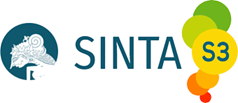Eksplorasi Etnomatematika pada Tari Tor-Tor Namora Pule di Deli Serdang
DOI:
https://doi.org/10.33394/mpm.v13i1.16245Keywords:
Deli Serdang, Eksplorasi, Etnomatematika, Tor-tor Namora PuleAbstract
Mathematics is often considered foreign by students from everyday life. In this study, researchers explored the culture in the North Sumatra region, namely the culture of South Tapanuli. The culture is Tor-tor Namora Pule. This study aims to explore ethnomathematics in the Tor-Tor Namora Pule dance movement in Deli Serdang, which is related to flat geometry.The approach used in this research is an ethnographic approach, with qualitative research methods. Data obtained through interviews, the instrument in this study consisted of the main instrument, namely the researcher himself and auxiliary instruments in the form of interview guidelines. The data validity technique used is source triangulation. The results of the data analysis concluded that four main types of movements were identified in the Namora Pule dance, namely manyomba, mangido, manggolom, and manyomba which ended with the word horas. This study found ethnomathematical indicators related to the concept of flat geometry that are realized in these dance movements. The manyomba movement has the shape of a right triangle, an arbitrary triangle, and an obtuse triangle. The mangido movement shows a semicircle shape. Triangular and circular shapes are found in the manggolom movement. Finally, the manyomba/horas movement displays the shape of an isosceles triangle. This research indicates the integration of geometry concepts in the local cultural practice of Tor-Tor Namora Pule Dance, which has the potential to become a contextualized mathematics learning resource.
Downloads
Published
2025-06-30
How to Cite
Nasution, H. A. G., & Lubis, M. S. (2025). Eksplorasi Etnomatematika pada Tari Tor-Tor Namora Pule di Deli Serdang. Media Pendidikan Matematika, 13(1), 316–328. https://doi.org/10.33394/mpm.v13i1.16245
Issue
Section
Articles
Citation Check
License
Authors who publish with this journal agree to the following terms:
- Authors retain copyright and grant the journal right of first publication with the work simultaneously licensed under a Creative Commons Attribution License that allows others to share the work with an acknowledgement of the work's authorship and initial publication in this journal.
- Authors are able to enter into separate, additional contractual arrangements for the non-exclusive distribution of the journal's published version of the work (e.g., post it to an institutional repository or publish it in a book), with an acknowledgement of its initial publication in this journal.
- Authors are permitted and encouraged to post their work online (e.g., in institutional repositories or on their website) prior to and during the submission process, as it can lead to productive exchanges, as well as earlier and greater citation of published work (See The Effect of Open Access).
Â













